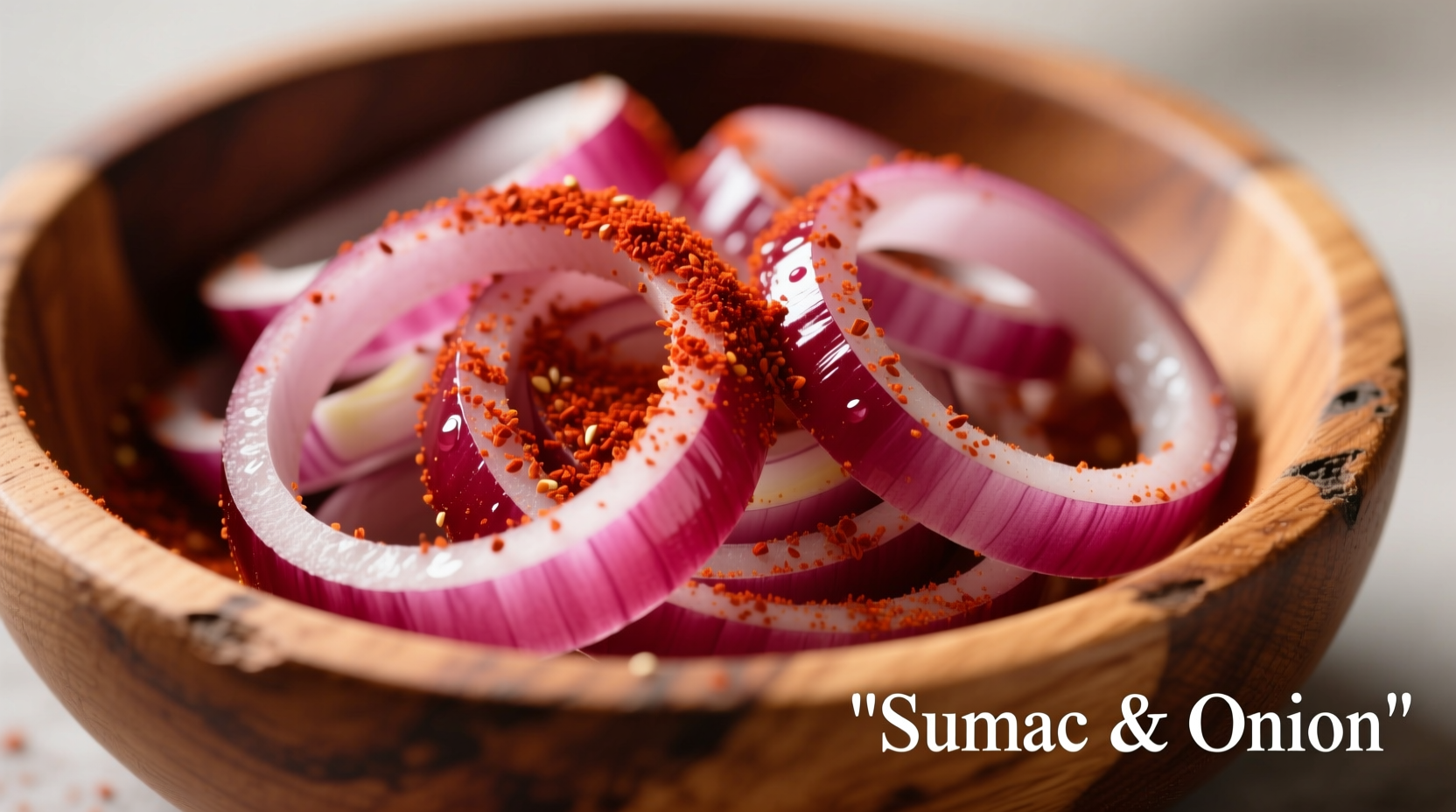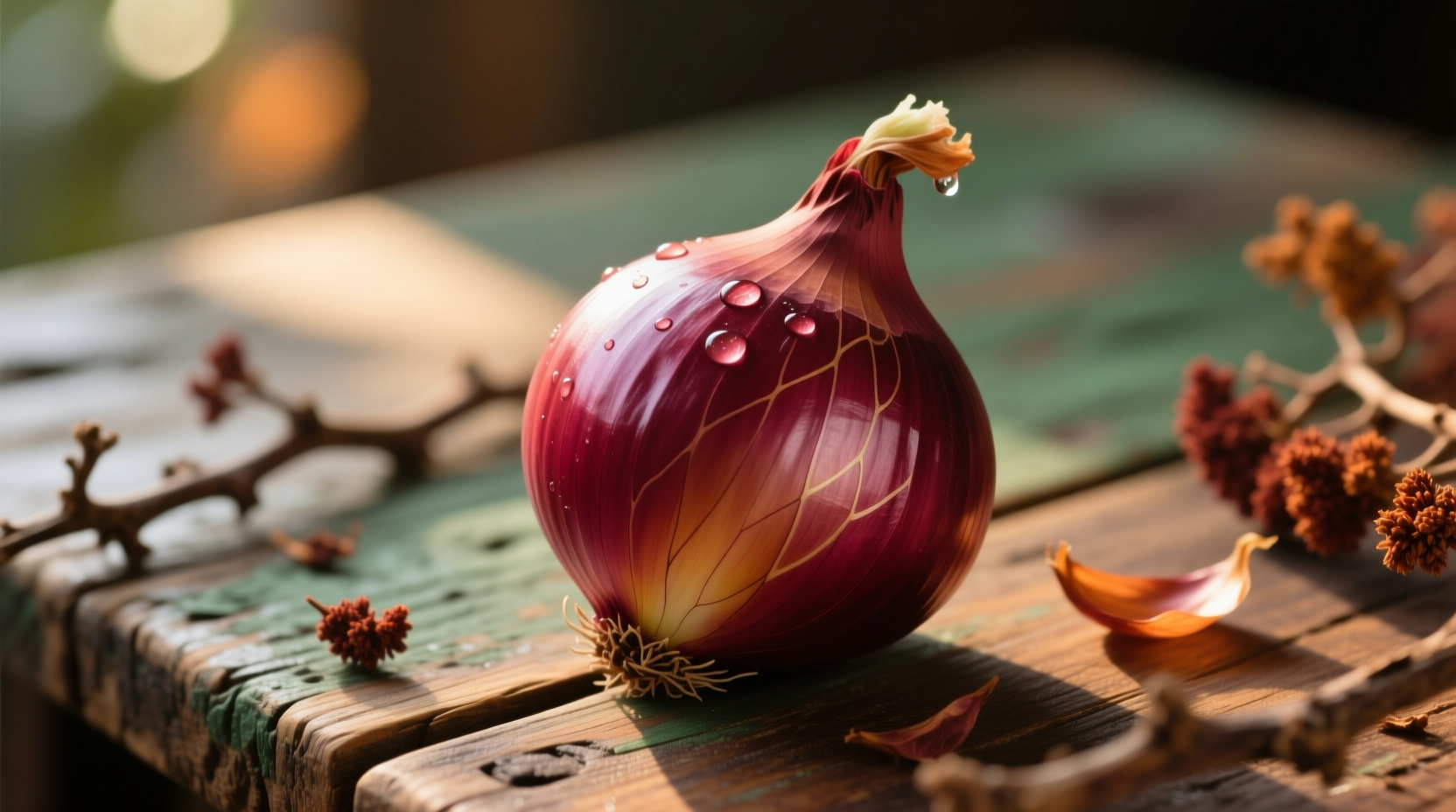Sumac is not an onion variety—it's a deep red spice made from ground sumac berries with a tangy, lemony flavor. Onions are pungent allium vegetables. While completely different ingredients, they complement each other beautifully in Middle Eastern cuisine, particularly in dishes like fattoush salad where sumac enhances onion's sharpness without overpowering it.
Clearing Up the Sumac Onion Confusion: Two Distinct Ingredients
Many home cooks mistakenly believe "sumac onion" refers to a specific onion variety. This confusion likely stems from similar-sounding names and their frequent culinary pairing. Sumac (Rhus coriaria) comes from dried berries of the sumac bush, while onions (Allium cepa) belong to the allium family. Understanding this distinction unlocks authentic flavor combinations used for centuries across Mediterranean and Middle Eastern cooking traditions.
What Exactly Is Sumac? (And Why It's Not an Onion)
Sumac appears as a deep burgundy powder with a distinctive tartness that brightens dishes without acidity. Harvested from wild sumac bushes throughout the Mediterranean region, the berries undergo careful drying and grinding to preserve their delicate flavor profile. Unlike onions which provide pungency and sweetness when cooked, sumac delivers citrus-like brightness that remains stable through cooking—making it invaluable for balancing rich dishes.
| Characteristic | Sumac | Onion |
|---|---|---|
| Botanical Classification | Rhus coriaria (berry) | Allium cepa (bulb) |
| Primary Flavor Profile | Tangy, lemony, slightly floral | Pungent, sweet when caramelized |
| Culinary Function | Acidic brightener, finishing spice | Aromatic base, textural component |
| Heat Stability | Maintains flavor when cooked | Flavor transforms with cooking |
How Sumac and Onions Work Together: The Perfect Culinary Partnership
While sumac doesn't replace onions, it transforms how we experience them. When sprinkled over raw onions in salads or dips, sumac's tartness cuts through onion's sharp bite, creating a more rounded flavor profile. This technique appears in traditional recipes across Lebanon, Syria, and Turkey where thinly sliced red onions get dusted with sumac before serving.
Pro chef technique: For optimal flavor integration, combine thinly sliced red onions with 1 teaspoon sumac and let sit for 15 minutes before adding to salads. The sumac slightly softens the onion's pungency while enhancing its natural sweetness.

Historical Timeline: Sumac's Journey From Ancient Remedy to Modern Pantry Staple
Sumac's culinary history reveals why it pairs so naturally with onions in traditional cooking:
- 4th Century BCE: Hippocrates documented sumac's medicinal properties, while Mediterranean cooks used it as a souring agent before lemons arrived
- 7th Century CE: Arab traders introduced sumac to Middle Eastern cuisine, where it became essential in dishes featuring onions and garlic
- 15th Century: Ottoman cooks developed the technique of pairing sumac with raw onions in salads and meze platters
- 21st Century: Sumac gained global popularity as chefs sought natural alternatives to vinegar and lemon juice
When Sumac Can (and Cannot) Substitute for Onions
Understanding the context boundaries prevents recipe disasters while encouraging creative substitutions:
Suitable Substitution Scenarios
- Raw applications: Use 1/2 teaspoon sumac per small onion in salads where you want tang without crunch
- Finishing touch: Replace raw onion garnish with sumac in cooked dishes like stews or roasted vegetables
- Dietary restrictions: Sumac provides onion-like complexity for low-FODMAP diets that restrict alliums
Where Substitution Fails
- Caramelization: Sumac can't replicate onions' sweet depth when slowly cooked
- Texture requirements: Dishes needing onion's structural integrity (like onion rings) won't work with sumac
- Flavor foundation: Mirepoix, sofrito, or other aromatic bases require actual onions for proper flavor development
Three Authentic Ways to Combine Sumac and Onions
These techniques come directly from traditional Middle Eastern kitchens:
1. Sumac-Onion Salad Dressing Base
Whisk together 2 tablespoons olive oil, 1 tablespoon sumac, 1 finely minced shallot, and a pinch of salt. Let sit 10 minutes before adding to greens. The sumac mellows the shallot's sharpness while adding complexity that regular vinegar can't match.
2. Sumac-Roasted Onion Confit
Cook sliced onions low and slow with olive oil until golden. Remove from heat and stir in 1 teaspoon sumac before serving. The sumac adds a bright counterpoint to the caramelized sweetness.
3. Sumac Onion Dip
Combine 1 cup Greek yogurt, 2 tablespoons sumac, 1/4 cup finely diced red onion, and fresh mint. Chill for 2 hours before serving. Perfect with pita chips or fresh vegetables.
Purchasing and Storage Tips for Maximum Flavor
Quality sumac makes all the difference in achieving authentic flavor combinations with onions:
- Look for: Deep burgundy color (not brownish red) and fresh citrus aroma
- Avoid: Pre-mixed "sumac blends" that often contain fillers
- Storage: Keep in airtight container away from light; use within 6 months for peak flavor
- Test freshness: Rub between fingers—should release aromatic oils with lemony scent
Why This Pairing Matters in Modern Cooking
As culinary traditions blend globally, understanding authentic ingredient pairings like sumac and onions helps home cooks create more nuanced dishes. Food historians at the University of California, Davis note that sumac's resurgence aligns with growing interest in pre-industrial flavor techniques that don't rely on industrial vinegar production. When used thoughtfully with onions, sumac creates complex flavor layers that elevate simple ingredients—a technique increasingly valued by professional chefs seeking natural flavor enhancement.











 浙公网安备
33010002000092号
浙公网安备
33010002000092号 浙B2-20120091-4
浙B2-20120091-4